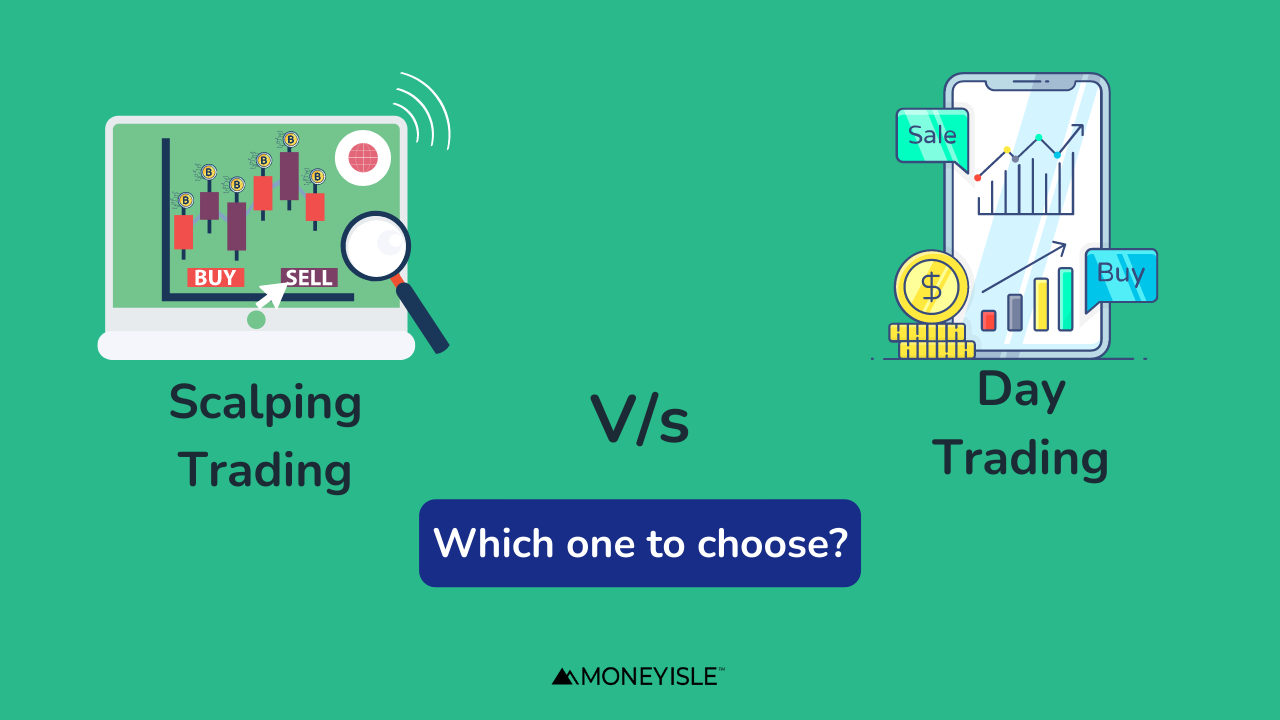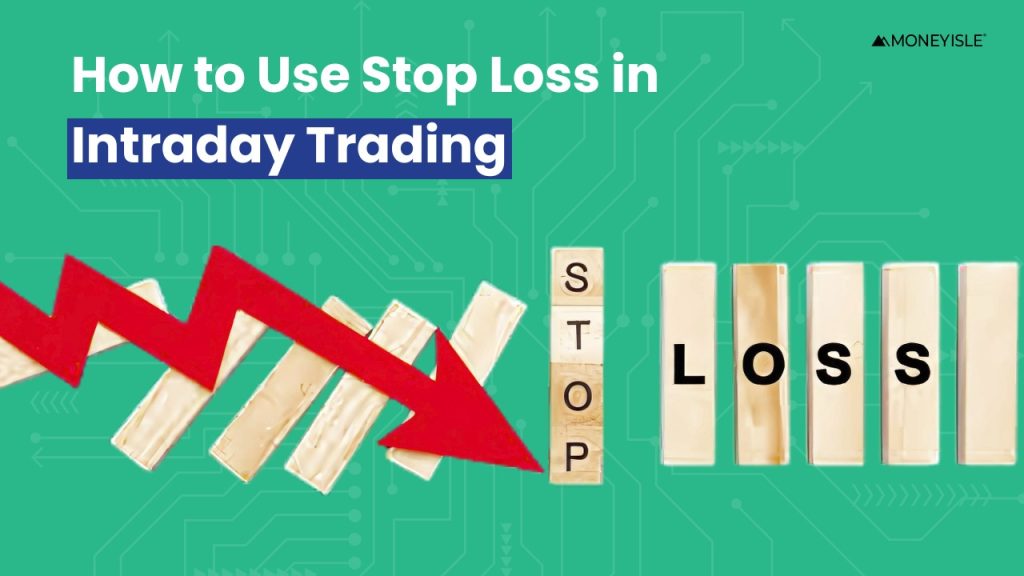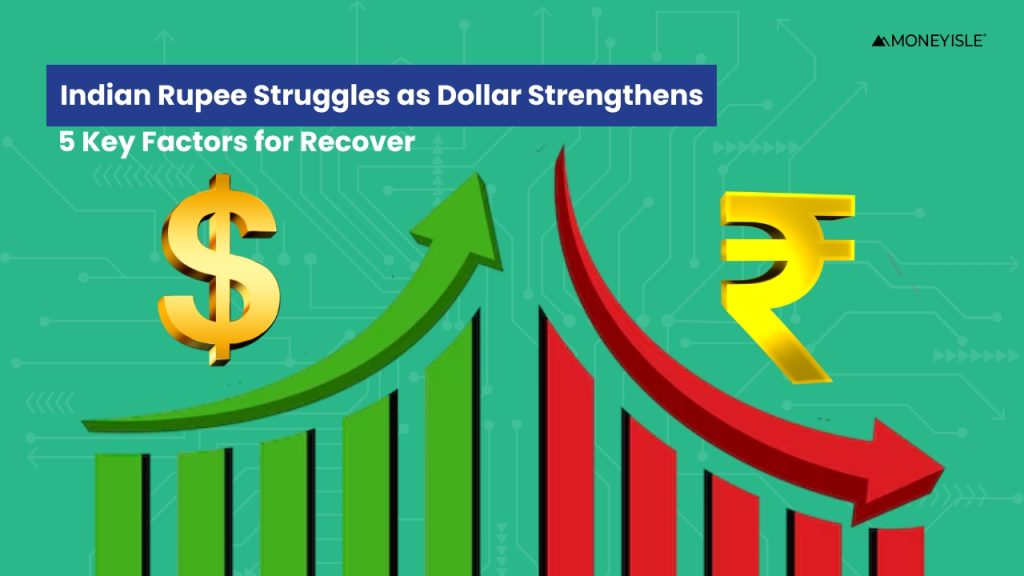Stock markets are easy to participate in. With people having different goals with their money, investing becomes diverse and more opportunistic. This means that people with long-term as well as short-term goals can easily get adjusted in stock markets.
Investing is looked for in the long run, while trading becomes more of pocket gains on a regular basis.
Whatever the goal with the money is, the stock markets have enough options for everybody. Out of these options, scalping trading and day trading are one of the most popular trading methods.
Choosing either of the trading methods is an amalgamation of important factors for proper execution. This is why we will be laying the most important differences between scalping and day trading in this blog to understand both these short-term trading methods better and help you choose the right strategy.
Understanding the day trading strategy
Day trading is the strategy of purchasing and selling an investment on the same day. It is a popular strategy and a niche in itself. A lot of professionals follow a certain set of strategies while day trading to increase their profits.
Day traders generally are well funded, which means they have a lot of room for experimenting. Most importantly, traders can also take advantage of small price movements occurring in the highly liquid stocks.
Day trading obviously is a short term investment strategy and is aimed at making profits on a daily basis. Day traders usually follow news articles and forums on the internet to evaluate the next investment opportunities and understand the market psychology.
Usually, day traders have a few methods of trading, which include:
- Range trading – Allows traders to use resistance levels to determine their buying/ selling decisions
- News-based trading – Allows traders to follow news articles to find their next investments
- Scalping trading – Allows traders to make small profits on small price changes
While day trading may seem like a profitable option, it involves its own risks as well. Not just that, but the day trading strategy requires an in-depth understanding of the workings of markets and adopting new strategies when things don’t go according to the plan.
Most importantly, day trading isn’t meant for everybody.
A lot of traders aren’t able to keep up with the changing patterns of the market or buy/sell at the right time. This invites potential losses.
Even though skill plays an important role in day trading, just some back luck is enough to cause significant losses to even the most experienced day traders.
Understanding the scalping trading strategy
The scalping strategy is a part of day trading. It aims at following and profiting from the small changes that happen in the intra-day stock price movement as it allows the traders to buy and sell throughout a trading session in order to make profits.
Scalping trading is very close to day trading strategy. However, where it’s different is that scalping trading deals with multiple trades in a very short amount of time, even down to minutes or seconds.
Because the position of an investment is barely held for some time, the profit margins are small. This is why scalpers trade with hundreds of stocks in a day to build their profit.
In the scalping strategy of trading, precise timing and the right kind of execution are crucial to building profits. While it may seem potentially profitable, it also has its fair share of risks.
The decisions scalpers make are usually based on the following factors:
- If there’s no up move, sell quickly
- Buy at breakouts
- Invest in multiple places
- Keep a diversified portfolio
- As you make a profit, sell half of it and adjust the exit to your entry point which ensures a high level of accuracy
The scalping strategy requires the trades to have an accurate quote system with a live feed as well as the ability to buy/sell instantly.
Scalping is suitable for those traders who can devote enough time to the markets and be swift in their buying and selling timings. If you are planning to start with the same kind of strategy, it’s important to understand the amount of time it’s going to consume.
Day trading vs Scalping trading – Which one to choose?
So far we know that scalping trading is a type of day trading. The most significant difference between scalping and day trading is that while day trading means buying/selling a security in a day, scalping trading refers to buying and selling the same security multiple times in a day.
There are many traders and investors that would want to choose either of the options to get profits.
To help you choose the best option, there are a few things you need to consider:
Risk vs Reward – Both these methods of trading do have the potential to offer profits on a daily basis. However, there are times when the markets are in a downfall. In such cases, investing is a risk, especially when the returns don’t seem that profitable so soon. Investing in such markets could cause heavy losses, even for experienced traders. This is why you should be careful in evaluating your strategy before investing.
The full-time investment schedule – Since day trading and scalping trading require you to buy and sell many times throughout the day, you essentially need to be on top of the markets with a live chart. This demands your time and attention, something you can’t do while managing your other jobs. This is why most traders have day trading as their only job.
Updated with the news – News provides information from different sources that traders capitalize on. If you aren’t the first to know, you aren’t the first to gain. As part of your investments and trading schedule, you also have to figure out reliable sources of news and analyze your investments based on this information only.
Conclusion
Scalping trading or day trading, whatever you choose, the risks are always present.
While none of these strategies is new, they sure are one of the most efficient ways to make profits on a daily basis. However, the problem with both these strategies is that they invite a mindset of ‘get rich quick’ amongst people.
Traders need to be okay with making small profits and investing the same in the next trade. Most importantly, if you are new to the markets and directly starting with either of these strategies, you could potentially lose more than what you anticipated.
Mastering these strategies could also be beneficial as it’s a great skill that could bring in a lot of profits in the future. However, starting off slow and easy is always one of the best ideas.











